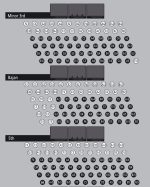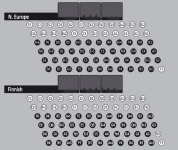Your honour...
Today we have heard some frightful allegations made against the Quint converter accordion, and while such unsubstantiated and ad hominem comments that are intended to belittle and dismiss this most glorious of accordion systems as somehow of lesser value, like suggesting the Quint accordion sounds like
elephant flatulence (yes Ed, that one didn't get forgotten, it's not just
proboscidea who have a good memory), or the allusion to the system of piano accordion with Quint bass as being a
shackle to hold back accordionists (
@saundersbp, there's a surprise). However, as the jury will hear, the magnificent Quint converter is simply a misunderstood and wrongfully maligned system NOT because of any inherent weakness it possesses, but rather because it is different and distinct to all the other free bass systems. Precisely because there is ONLY 1 Quint system and not multiple variations on a tired theme, the Quint converter piano accordion stands tall, noble and conspicuous, for it is built upon on a most universal of accordion formats - the traditional stradella bass accordion! Quint is a simple and capable system, despite being taken wholly for granted by many.
Wise citizens of the jury, I would like to introduce my first witness as an example of how the beautiful the Quint converter is. Richard Galliano is perhaps the greatest accordionist who ever placed an accordion on his knee - of such skill and musically as has never been replicated. Listen to his beautiful, haunted and unsettled interpretation of
Gnossienne No. 4, Lent a 20th Century work by Erik Satie (whose mother's side was Scottish, just sayin').
For my second example of the priceless worth of Quint system, I would like to call forward a recording of the Grande Maestro Salvatore De Gesualdo. Here on this recording we listen to music composed by perhaps the greatest composer of the English Renaissance played with a sublime understatement a piano accordion with Quint free bass. I give you William Byrd's (1542 - 1623) keyboard work, entitled Fantasy.
For my next witness to dispel the myths of the restrictions of Quint system I would like to call forward Maestro Ivano Battiston playing a piece of music by the greatest composer who has ever drawn breath. Here's Contrapunctus I by J. S. Bach.
While I could continue calling forward witness after witness to the marvels of Quint system - world champion after world champion (as in all the above examples) I will leave you here now with something a little lighter, from yet another world champion, Grayson Masefield...
I rest my case!






